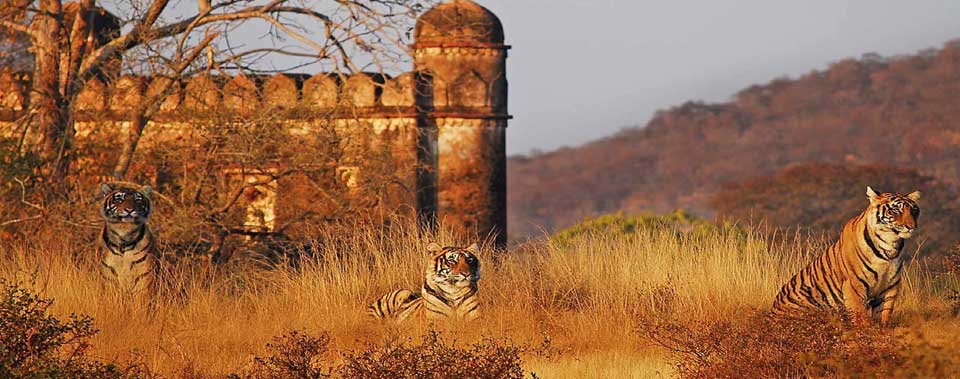Ranthambore National Park is the most celebrated tiger reserve in Rajasthan and is quite popular among Indian wildlife destinations. The national park derives its name and identity from the historic Ranthambore Fort, which is prominently constructed on a rocky hill within the forest landscape. The region reflects a deep connection between nature, royalty, and conservation, shaped over several centuries. In earlier times, dense forests covered large parts of the Indian subcontinent, including the area now known as Ranthambore. These forests supported rich wildlife and remained largely undisturbed due to the limited human population. However, with growing population pressure and industrial expansion during the later years of the imperial era, forest resources across India began to face excessive exploitation. Large tracts of green cover were cleared to meet economic and developmental needs, resulting in rapid habitat loss for wildlife.
The alarming reduction in forest cover and wildlife numbers eventually drew the attention of policymakers. This led to the introduction of forest protection laws and the designation of protected areas such as reserve forests and national parks to safeguard India’s remaining natural heritage.

Ranthambore Fort and the Royal Hunting Era
The Ranthambore forest was historically linked to the Jaipur royal family and functioned as a prestigious hunting ground before India’s independence. The forest was owned by the Maharajas of Jaipur and managed through their royal hunting department. Local village communities were permitted to collect forest produce after paying a small annual tax. Human settlement around the forest was sparse, resulting in minimal disturbance to wildlife. Hunting activities were occasional and did not significantly damage the forest ecosystem due to the vast size of the landscape.
The Ranthambore Fort lies in the centre of the forest. It is a structure that predates many modern conservation efforts. The foundations of the fort were laid in 944 AD by King Sapaldaksha of the Chauhan Dynasty, and it was later expanded by successive rulers. The fort complex includes palaces, temples, courtyards, and interconnected stone pathways, forming a vast architectural maze.
In 1568, the fort was captured by Mughal Emperor Akbar and remained under Mughal control until the late 17th century. It was later governed by the Maharajas of Jaipur until India gained independence in 1947. Today, the fort stands abandoned, where langurs roam freely across its walls and birds circle above the ancient battlements, blending history with wilderness.
Transition from Hunting Grounds to Conservation Area
By the mid-20th century, the need for formal forest protection became unavoidable. In 1953, the Rajasthan Forest Act was implemented to provide legal safeguards to forested regions. Although the act could not entirely prevent exploitation, it marked a significant step toward conservation. In 1955, the forest area surrounding Ranthambore was declared the Sawai Madhopur Sanctuary, and all commercial activities within the forest were banned. Despite these measures, tiger populations continued to decline across the country, pushing the species toward extinction.
Recognising this crisis, the Government of India launched Project Tiger in 1973 under the leadership of Prime Minister Indira Gandhi. A core area of the sanctuary was brought under this initiative, and Ranthambore became one of India’s key tiger conservation zones.
Key developments that followed include: • 1966: Ranthambore Fort and palace were officially handed over to the Indian government. • 1973: Project Tiger was introduced, transforming Ranthambore into a protected tiger reserve. • 1980: Over 12 villages were relocated, and 282.03 sq km was declared Ranthambore National Park. • 1983: Kela Devi Sanctuary (647 sq km) was added to the tiger reserve. • 1984: Sawai Mansingh Sanctuary (130 sq km) was included in the protected zone.
Over the years, the protected area expanded further by incorporating surrounding forest regions. These sustained conservation efforts led to a remarkable recovery in the tiger population. According to the 2014 tiger census, Ranthambore Tiger Reserve was home to approximately 64 tigers, reflecting the success of long-term wildlife protection policies. Today, Ranthambore National Park is regarded as one of the finest destinations in the world for observing wild tigers in their natural habitat. The park stands as a powerful example of how historical landscapes, once used for royal hunting, have been transformed into thriving conservation zones through careful planning and commitment.